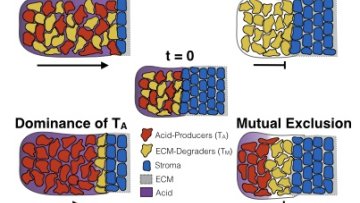Can we have null models of real networks? Maximum Entropy Random Loopy Graphs
Abstract
Real networks are highly clustered (large number of short cycles) in contrast with their random counterparts. The Erdős–Rényi model and the Configuration model will generate networks with a tree like structure, a feature rarely observed in real networks. This means that traditional random networks are a poor choice as null models for real networks. Can we do better than that? Maximum entropy random graph ensembles are the natural choice to generate such networks. By introducing a bias with respect to the number of short cycles in a degree constrained graph, we aim to get a random graph model with a tuneable number of short cycles [1,2]. Nevertheless, the story is not so simple. In the same way random unclustered graphs present undesired topology, highly clustered ones will do as well if one is not careful with the scaling of the control parameters relative to the system size. Additionally the techniques to generate and sample numerically from general biased degree constrained graph ensembles will also be discussed. The topological transition has an important impact on the computational cost to sample graphs from these ensembles. To take it one step further, a general approach using the eigenvalues of the adjacency matrix rather than just the number of short cycles will also be presented, [2].
[1] López, Fabián Aguirre, et al. "Exactly solvable random graph ensemble with extensively many short cycles." Journal of Physics A: Mathematical and Theoretical 51.8 (2018): 085101.
[2] López, Fabián Aguirre, and Anthony CC Coolen. "Imaginary replica analysis of loopy regular random graphs." Journal of Physics A: Mathematical and Theoretical 53.6 (2020): 065002.
Challenging the assumption of simple scaling in the rules of network growth
Mathematics has long played a crucial role in understanding ecological dynamics in a range of ecosystems, from classical models of predators and prey to more recent models of aquatic organisms' interaction with global climate. When we think of ecosystems we usually imagine coral reefs or tropical forests; however, over the past decade a substantial effort has emerged in studying a tiny, yet deadly ecosystem: human tumours. Rather than being a single malignant mass, tumours are living and evolving ecosystems.
$\Gamma$- convergence and homogenisation for a class of degenerate functionals
Abstract
I will present a $\Gamma$-convergence for degenerate integral functionals related to homogenisation problems in the Heisenberg group. In our case, both the rescaling and the notion of invariance or periodicity are chosen in a way motivated by the geometry of the Heisenberg group. Without using special geometric features, these functionals would be neither coercive nor periodic, so classic results do not apply. All the results apply to the more general case of Carnot groups. Joint with Nicolas Dirr, Paola Mannucci and Claudio Marchi.
A Recipe for Reciprocity
Abstract
Gauss noted quadratic reciprocity to be among his favourite results, and any undergrad will quickly pick up on just how strange it is despite a plethora of elementary proofs. By 1930, E. Artin had finalized Artin reciprocity which wondrously subsumed all previous generalizations, but was still confined to abelian contexts. An amicable non-abelian reciprocity remains a driving force in number-theoretic research.
In this talk, I'll recount Artin reciprocity and show it implies quadratic and cubic reciprocity. I'll then talk about some candidate non-abelian reciprocities, and in particular, which morals of Artin reciprocity they preserve.
The Toda integrable system in geometry and representation theory
Abstract
The Toda integrable system was originally designed as a specific model for lattice field theories. Following Kostant's insights, we will explain how it naturally arises from the representation theory of Lie algebras, and present some more recent work relating it to cotangent bundles of Lie groups and the topology of Affine Grassmannians.


